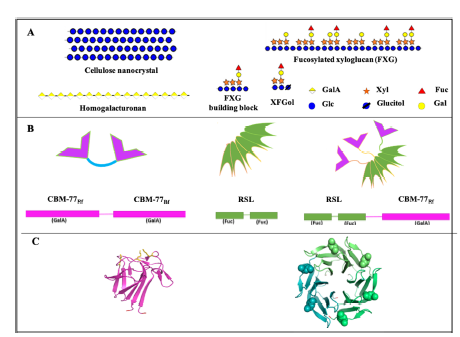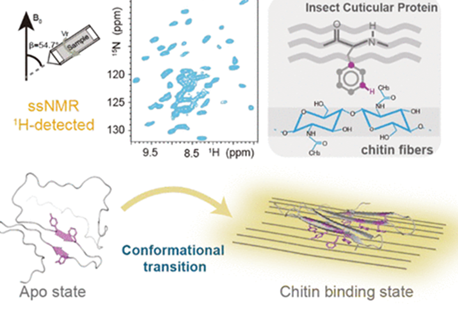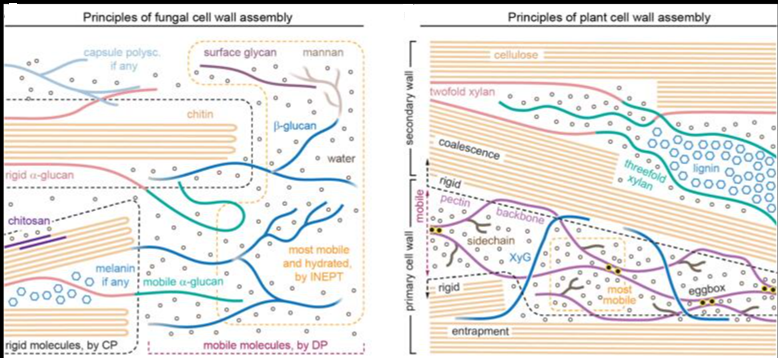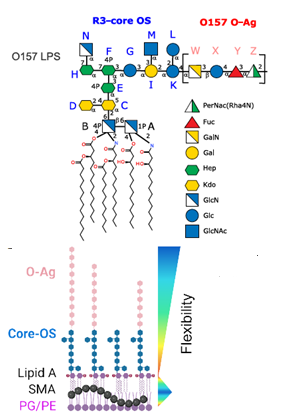The cell wall constitutes a fundamental structural component of plant cells, providing them with mechanical resistance and flexibility. Mimicking that wall is a critical step in the conception of an experimental model of the plant cell. The assembly of cellulose/hemicellulose in the form of cellulose nanocrystals and xyloglucans as a representative model of the plant cell wall has already been mastered. However, those models lacked the pectin component. In this work, we used an engineered chimeric protein for bridging pectin to the cellulose/hemicellulose network, therefore achieving the assembly of complete cell wall mimics. The authors engineered proteins, i.e. carbohydrate-binding module from Ruminococcus flavefaciens, able to bind oligo-galactomannan, resulting in high-affinity polygalacturonan receptors with Kd in the micromolar range. A Janus protein, with cell wall glueing property, was then designed by assembling this CBM with a Ralstonia solanacearum lectin specific for fucosylated xyloglucans.

The resulting supramolecular architecture can bind fucose-containing xyloglucans and homogalacturonan, ensuring high affinity for both. A two-dimensional assembly of an artificial plant cell wall was built first on synthetic polymer and then on a supported lipid bilayer. Such artificial cell walls can serve as a basis for developing plant cell mechanical models and thus deepen the understanding of the principles underlying various aspects of plant cells and tissues.




